
English Lectures / lipids 1 ENG
.pdfKUBAN STATE MEDICAL UNIVERSITY
KUBAN MEDICAL INSTITUTE
DEPARTMENT OF FUNDAMENTAL AND CLINICAL
BIOCHEMISTRY
Lipids. Part 1
Krasnodar, 2020
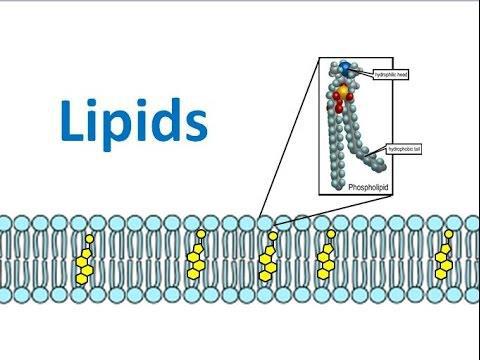
Lipids
Lipids are a group of organic substances, including fats and fat-like substances (lipoids).
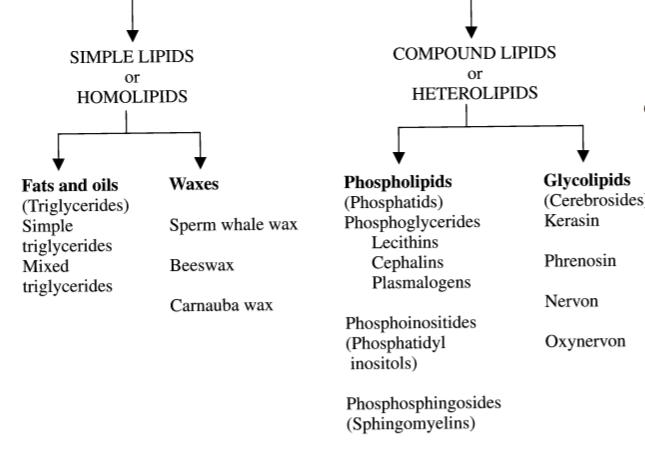
Chemical classification
• According to one classification, lipids are divided into simple (neutral) – triacylglycerides, cholesterol esters, wax ethers, and complex (polar lipids).
• Complex lipids containing sugar residues are called glycolipids (glycosyl diacylglycerides, cerebrosides, gangliosides);
• lipids containing the remainder of phosphoric acid
– phospholipids (lecithins, cephalins, polyglycerophosphatides, sphingomyelins);
• lipids containing a sulfo group
— sulfolipids.
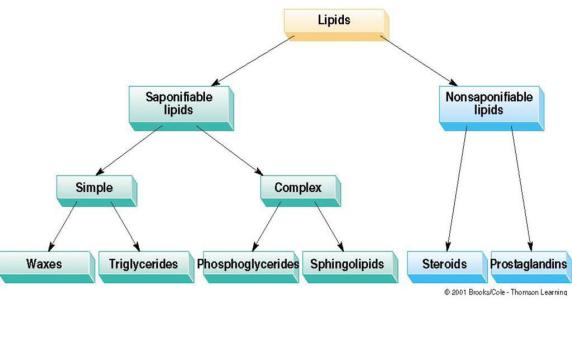
Other classifications
Lipids are divided into saponifiable, which are hydrolyzed, and unsaponifiable, for which hydrolysis is difficult.
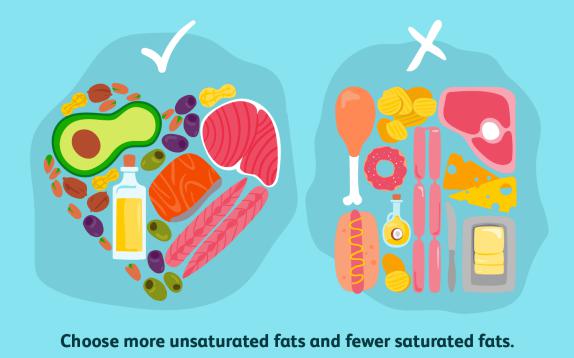
Other classifications
•Plant lipids: 90-95% free lipids of plant origin consist of acylglycerides (triacylglycerides, diacylglycerides, monoacylglycerides), they also contain other lipids – waxes, phospholipids, sterols, as well as a large group of related substances (pigments, fat-soluble vitamins)
•Animal lipids are a mixture in various ratios of simple and mixed triacylglycerides. The color of animal fats is due to the presence of carotenoids – pigments that color fats in yellow.
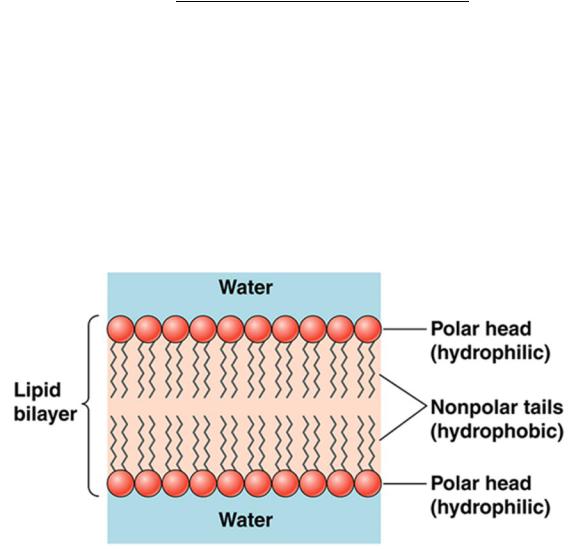
Lipids in a body
The most part of lipids in an organism are fats - triacylglycerols, which serve as a form of energy deposition. Fats are located mainly in the subcutaneous adipose tissue and also perform the functions of thermal insulation and mechanical protection. In a body they are:
1.In the form of protoplasmic fat, which is a structural component of cells. Protoplasmic fat has a constant chemical composition and is contained in tissues in a certain amount, which does not change even with pathological obesity
2.In the form of a spare, reserve, fat. The amount of reserve fat is subject to great fluctuations.
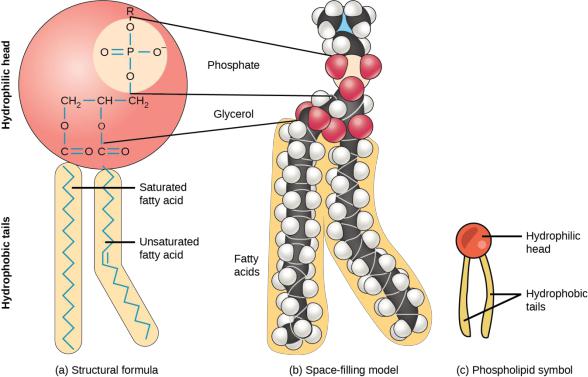
Phospholipids
Phospholipids are a diverse group of lipids that contain a residue of phosphoric acid. Phospholipids are divided into glycerophospholipids, the basis of which is trihydric alcohol glycerol, and sphingo phospholipids – derivatives of the amino alcohol sphingosine.

Glycerophospholipids
•The structural basis of glycerophospholipids is glycerol. Glycerophospholipids are molecules in which two fatty acids are linked by an ester bond to glycerol in the first and second positions; in the third position is the residue of phosphoric acid, to which, in turn, various substituents, most often amino alcohols, can be attached.
•If in the third position there is only phosphoric acid, then the glycerophospholipid is called phosphatidic acid. Its residue is called "phosphatidyl".
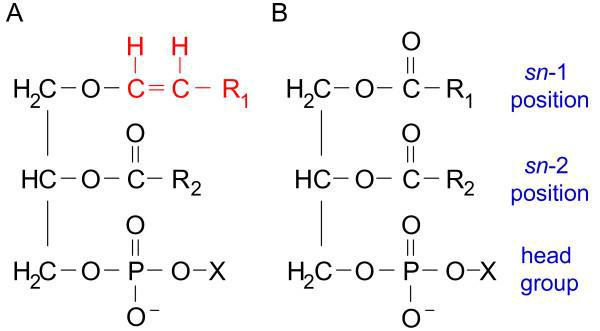
Plasmalogens
Plasmalogenes are phospholipids in which the first position of glycerol is not fatty acid, but the remainder of the alcohol with a long aliphatic chain, linked by a simple ether bond. A characteristic feature of plasmalogens is the double bond between the first and second carbon atoms in the alkyl group.

Sphingolipids
The amino alcohol sphingosine, consisting of 18 carbon atoms, contains hydroxyl groups and an amino group. Sphingosine forms a large group of lipids in which a fatty acid is bound to it through an amino group.
